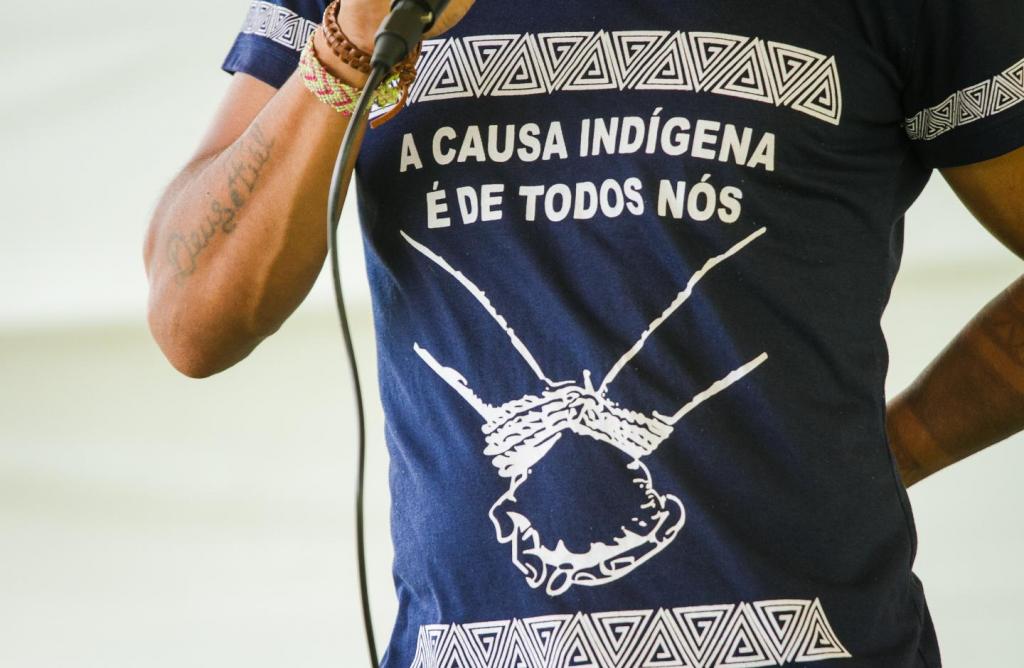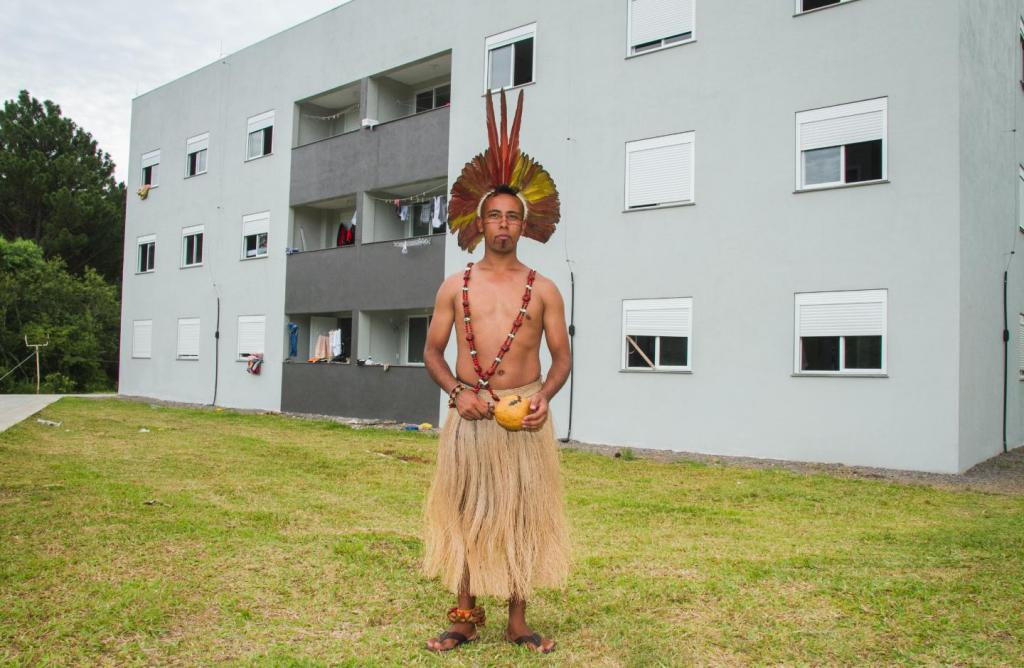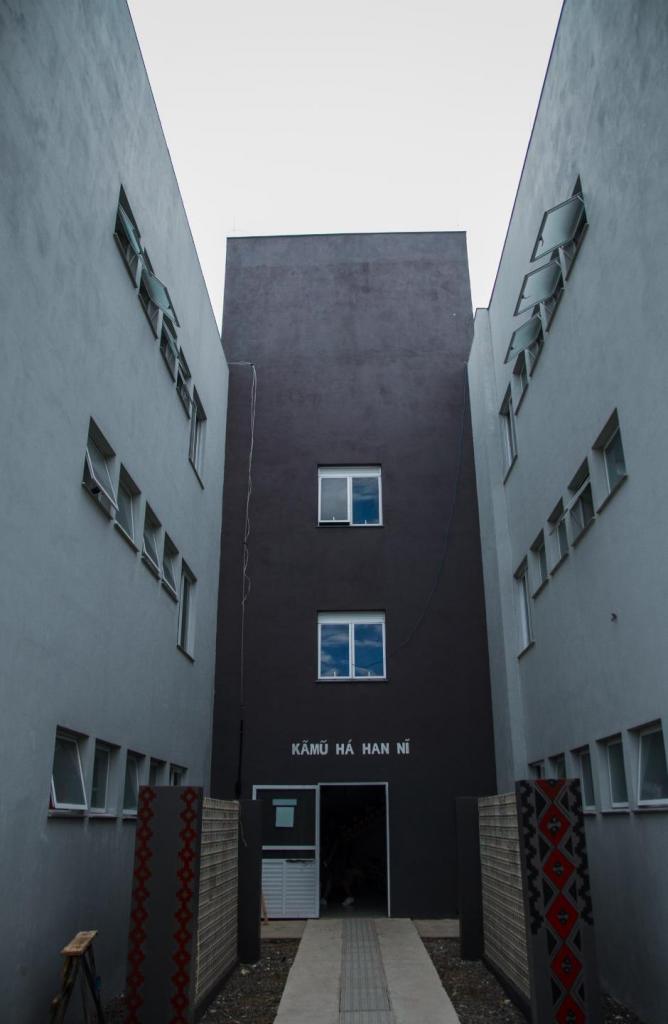The outcome of a long battle—this is how Chief Kaingang Nathanael Claudino, from the village of Santa Maria, defines the Augusto Ópẽ da Silva Indigenous Student House, inaugurated at UFSM on December 14, 2018. With 96 student places available and 66 already occupied by students since March 2019, the residence hall is the result of affirmative public policies designed to ensure access and persistence of indigenous students, which have been in place at the University since 2008.

Besides being a civil right, the House is a space for preservation of the native culture within the University. “Here we can show a little of the culture of our people, the Guaraní, the Kaingang, and feel free to speak our language,” says pharmacy student William Gama, from the Xakriabá community in Minas Gerais. “Leaving the village and putting yourself in a totally different context and culture is a bit difficult, but I’m adapting,” says the student who has lived in the Indigenous Student House since 2018.
Bruno Júnior Ferreira, a Kaingang student from the Guarita Indigenous Reservation, located in northwest Rio Grande do Sul, has been studying medicine at UFSM since 2016 and also lives in the House. “It’s good to live here because there are people with the same culture as mine, with the same points of view, it’s easier to live together”, he says.
The Indigenous Student House was named after the Kaingang leader who envisioned its creation. Augusto Ópẽ da Silva was born in the community of Iraí, in the North of Rio Grande do Sul and died in 2014. He led the fight for indigenous causes throughout the state and the country, especially in Santa Maria – where the local indigenous community school is also named after him. “We have to honor our warriors while they are among us. When they leave, they leave happy. They leave with their duty fulfilled,” says Chief Nathanael.
Also present at the inauguration of the House was 98-year-old Jorge Canã Garcia, who passes down knowledge of the indigenous culture learned from his elders to the teachers at the Nonoai Reservation school, where he has lived since birth. He believes that the children of the village should learn to speak and write in both Kaingang and Portuguese. “If they don’t learn to speak ‘Indian’, the culture is lost”, says the leader. For those who are already studying at the University, Jorge highlights that support is needed to make sure they are able to continue and graduate. “Maybe in the future one of them will write a book in Kaingang, so that the culture is not lost,” says Jorge.

Chief Nathanael points out that UFSM students living in the Indigenous Student House spend free time between classes and school work at the House, using the opportunity to preserve the language, traditional medicines, typical foods, songs and rituals. “They have this freedom because the space is ours,” says Nathanael. Another advantage is that the House accommodates students with children.
Maria Inês de Freitas, a Kaingang woman and the representative of the National Indian Foundation (FUNAI), sees the inauguration of the house as an important moment of territorial demarcation and visibility for the cause of indigenous students. “The house is the result of a struggle, it is an important achievement,” says Maria Inês, adding that “faced with a political context that is unfavorable for the indigenous agenda, we need to unite more and more with the university, with civil society and with indigenous leaders to establish a dialogue and build alternatives”.
“The Kaingang are brave people. We will continue to fight for our space, not only at UFSM, but also at other universities,” says Chief Nathanael.

Reporter: Andressa Motter;
Graphic Design: Lidiane Castagna;
Photographer: Rafael Happke.
Published 2019



